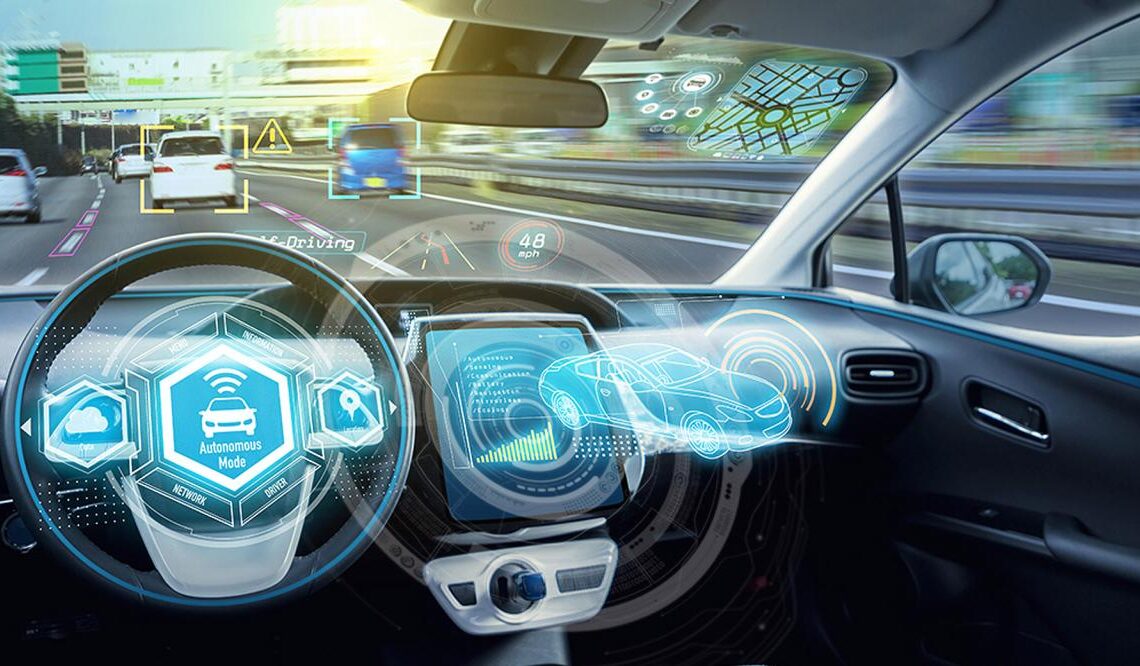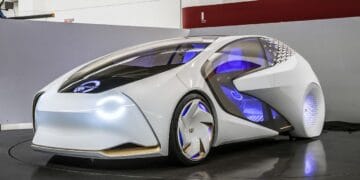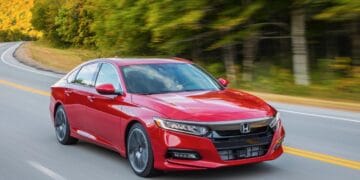The concept of self-driving technology, once confined to the realm of science fiction, is rapidly becoming a tangible reality, poised to revolutionize how we perceive and interact with transportation. Autonomous vehicles (AVs), equipped with sophisticated sensors, artificial intelligence, and advanced computing power, are moving beyond experimental stages and into public roads, promising a future of enhanced safety, increased efficiency, and unparalleled convenience. This extensive exploration dives deep into the intricate world of self-driving tech, uncovering its underlying principles, its profound implications, and the transformative potential it holds for industries, urban planning, and the very fabric of daily life.
The Autonomous Revolution
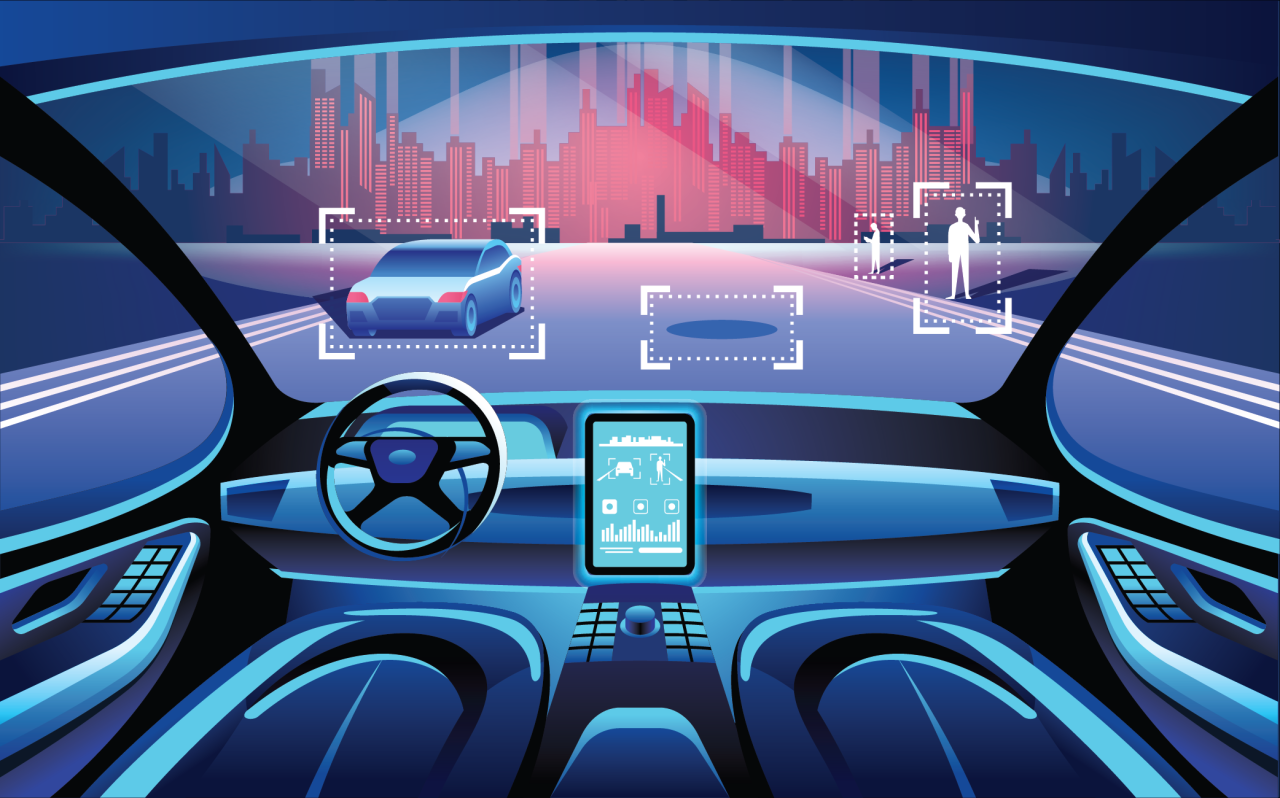
The shift towards autonomous driving represents nothing less than a fundamental paradigm change in personal and public mobility. For over a century, human drivers have been the central component of vehicle operation, a role that comes with inherent limitations and risks. Self-driving technology seeks to mitigate these by replacing human fallibility with precision, consistency, and tireless vigilance. This revolution isn’t just about making cars drive themselves; it’s about fundamentally reshaping traffic flow, reducing accidents, unlocking new economic opportunities, and freeing up human time and resources previously dedicated to driving.
The excitement surrounding self-driving cars stems from their multifaceted benefits. Imagine roads with significantly fewer accidents, traffic jams that are a distant memory, and commutes where you can work, relax, or socialize instead of focusing on the road. For logistics companies, AVs promise optimized delivery routes and reduced operational costs. For individuals with disabilities or the elderly, autonomous vehicles offer unprecedented freedom and independence. This convergence of safety, efficiency, and accessibility has propelled self-driving tech to the forefront of technological innovation, attracting immense investment and research across the globe.
A. Understanding the Levels of Driving Automation
To accurately categorize and assess self-driving capabilities, the Society of Automotive Engineers (SAE) International developed a widely accepted classification system with six levels of automation, ranging from no automation to full automation:
A. Level 0: No Automation: The human driver performs all driving tasks. This includes most older vehicles without any active safety features.
B. Level 1: Driver Assistance: The vehicle has either steering or acceleration/braking support for the driver. Examples include adaptive cruise control or lane keeping assist, where the human driver remains fully responsible for monitoring the driving environment and operating the vehicle safely.
C. Level 2: Partial Automation: The vehicle can perform both steering and acceleration/braking simultaneously under specific conditions, but the human driver must remain engaged and supervise the driving environment. Features like “hands-free” highway driving systems (e.g., Tesla Autopilot, GM Super Cruise, Ford BlueCruise) fall into this category. The driver must be ready to take over at any moment if the system encounters a situation it cannot handle or requests intervention.
D. Level 3: Conditional Automation: The vehicle can handle all aspects of driving under specific conditions (e.g., highway driving, traffic jams) and can manage unexpected events. The human driver is not required to monitor the environment continuously but must be available to take over if the system requests it. This is a crucial distinction, as the system takes over “eyes off” responsibility within its operational design domain (ODD). However, outside this ODD or if the system encounters a limitation, it will alert the driver to intervene.
E. Level 4: High Automation: The vehicle can perform all driving tasks and monitor the driving environment under specific operational design domains (ODDs) – meaning within defined geographic areas, specific weather conditions, or particular road types. The human driver is not expected to intervene, and if the system encounters a situation it cannot handle within its ODD, it will safely pull over or stop. This level is characteristic of many current robotaxi services operating in limited areas (e.g., Waymo in Phoenix, Cruise in San Francisco).
F. Level 5: Full Automation: The vehicle can perform all driving tasks under all road conditions and environmental circumstances, equivalent to a human driver. No human intervention is ever required, and a steering wheel or pedals may not even be present. This is the ultimate goal, representing a true “driverless” vehicle that can operate anywhere, anytime.
B. Core Technologies Powering Autonomous Vehicles
The sophisticated capabilities of self-driving vehicles rely on a complex interplay of cutting-edge technologies:
Sensors: The “eyes and ears” of the autonomous vehicle, providing a comprehensive understanding of its surroundings.
A. Cameras: Provide rich visual data, detecting lane markings, traffic lights, road signs, and identifying objects (pedestrians, other vehicles). They are crucial for understanding color, texture, and object classification. Multiple cameras provide a 360-degree view.
B. Lidar (Light Detection and Ranging): Uses pulsed laser light to create precise, 3D point clouds or maps of the environment, identifying objects and their distance with high accuracy regardless of lighting conditions. Lidar excels at creating highly accurate geometric representations of the surroundings.
C. Radar (Radio Detection and Ranging): Emits radio waves to detect objects, their speed, and distance. Radar is particularly effective in adverse weather conditions like fog, heavy rain, or snow, as radio waves can penetrate these elements more effectively than light. It’s excellent for detecting speed and relative motion.
D. Ultrasonic Sensors: Used for short-range detection, typically in parking situations, for detecting obstacles directly around the vehicle, or for low-speed maneuvering. They use sound waves to measure distance.
Mapping and Localization:
A. High-Definition (HD) Maps: These are highly detailed, pre-built maps that provide precise information about lane configurations, road furniture (like traffic signs and signals), traffic signals, and even sidewalk details. These maps are far more granular and accurate than standard consumer navigation maps, offering centimeter-level precision.
B. GPS (Global Positioning System): Provides general vehicle location, but its accuracy (often several meters) is not sufficient for precise lane-level driving. It is used as a foundational layer, often supplemented with more precise methods.
C. Inertial Measurement Units (IMU): Tracks the vehicle’s precise position, velocity, and orientation (pitch, roll, yaw) using accelerometers and gyroscopes. IMUs are critical for dead reckoning when GPS signals are unavailable (e.g., in tunnels).
D. Simultaneous Localization and Mapping (SLAM): A computational technique used by AVs to simultaneously build a map of an unknown environment while keeping track of their location within that environment. This allows for real-time map updates and enhanced localization.
Artificial Intelligence (AI) and Machine Learning (ML): The “brain” of the autonomous system, responsible for processing data, making decisions, and planning trajectories.
A. Perception: AI algorithms (often using deep neural networks) process the massive amounts of raw sensor data to identify and classify objects (e.g., “that’s a car,” “that’s a pedestrian,” “that’s a traffic light”), track their movement, and understand the dynamic environment.
B. Prediction: ML models predict the probable behavior of other road users (pedestrians, cyclists, other vehicles) based on their observed movements, historical data, and traffic patterns. This is crucial for anticipating actions and planning safe maneuvers.
C. Planning: AI plans the vehicle’s trajectory in real-time, deciding on optimal speed, lane changes, turns, and obstacle avoidance maneuvers. This involves complex algorithms that balance safety, efficiency, comfort, and adherence to traffic laws.
D. Control: AI translates the planned trajectory into precise commands for the vehicle’s actuators (steering, brakes, accelerator, turn signals). These commands are executed with sub-millisecond precision, ensuring smooth and safe operation.
High-Performance Computing:
A. Onboard Processors: Powerful, specialized computers within the vehicle are required to process the massive amounts of sensor data and execute complex AI algorithms in milliseconds. These often include dedicated AI accelerators or chips (e.g., NVIDIA Drive, Intel Mobileye).
B. Cloud Computing: Used extensively for training the AI models (which requires enormous datasets), updating HD maps, and analyzing vast amounts of data collected from fleets of AVs. This iterative process of data collection and model refinement is vital for continuous improvement.
Vehicle-to-Everything (V2X) Communication: An emerging technology that allows AVs to communicate with their surroundings, beyond their direct sensor perception.
A. V2V (Vehicle-to-Vehicle): Allows AVs to communicate with each other, sharing information about traffic, hazards, intentions (e.g., upcoming braking, lane changes), and potential collisions, even if objects are obscured from direct sensor view.
B. V2I (Vehicle-to-Infrastructure): Enables communication between AVs and smart road infrastructure (e.g., traffic lights, road sensors, digital signs) for optimized traffic flow, early warning of road conditions, and managing traffic signal timing.
C. V2P (Vehicle-to-Pedestrian): Future systems may allow communication with smartphone-carrying pedestrians or cyclists, enhancing safety by alerting both the vehicle and the vulnerable road user to potential conflicts.
C. The Economic Impact and Business Models
The proliferation of self-driving technology is poised to create profound economic shifts and new business opportunities:
A. Robotaxi Services: Companies like Waymo and Cruise are already operating limited robotaxi services in specific cities, offering on-demand, driverless rides. This model could significantly reduce transportation costs for consumers and redefine urban mobility by making private car ownership less necessary.
B. Logistics and Delivery: Autonomous trucks and delivery vans promise to revolutionize the freight and last-mile delivery industries. They can operate 24/7, reduce labor costs, optimize routes, and potentially lower the environmental impact of goods transportation.
C. Ride-Sharing Evolution: Existing ride-sharing companies (e.g., Uber, Lyft) are heavily investing in AVs to cut operational costs (driver wages, fuel, maintenance) and increase profitability, transforming their service offerings into fully autonomous fleets.
D. Public Transportation: Autonomous shuttles and buses could enhance public transit efficiency, expand service areas (especially in underserved communities), and improve accessibility, offering more flexible and cost-effective solutions.
E. Automotive Industry Transformation: Traditional automakers are pivoting from merely manufacturing cars to becoming broader mobility service providers. This involves massive investments in AV research, software development, and the creation of new business units focused on autonomous solutions.
F. New Industries and Job Roles: The AV sector will create new jobs in software development, AI engineering, data analysis, cybersecurity, infrastructure management, fleet maintenance for AVs, and regulatory compliance. While some driving jobs may be impacted, new high-skill roles will emerge.
G. Insurance Industry Overhaul: Liability models for accidents will undergo a significant shift from human drivers to AV manufacturers, software providers, or fleet operators. This necessitates a complete re-evaluation of insurance frameworks and risk assessment.
H. Real Estate Impact: Reduced need for parking in urban centers could free up valuable land for housing, green spaces, or commercial development. Changes in commute times and urban sprawl might influence housing choices and suburban development patterns.
D. Safety, Ethics, and Regulatory Hurdles
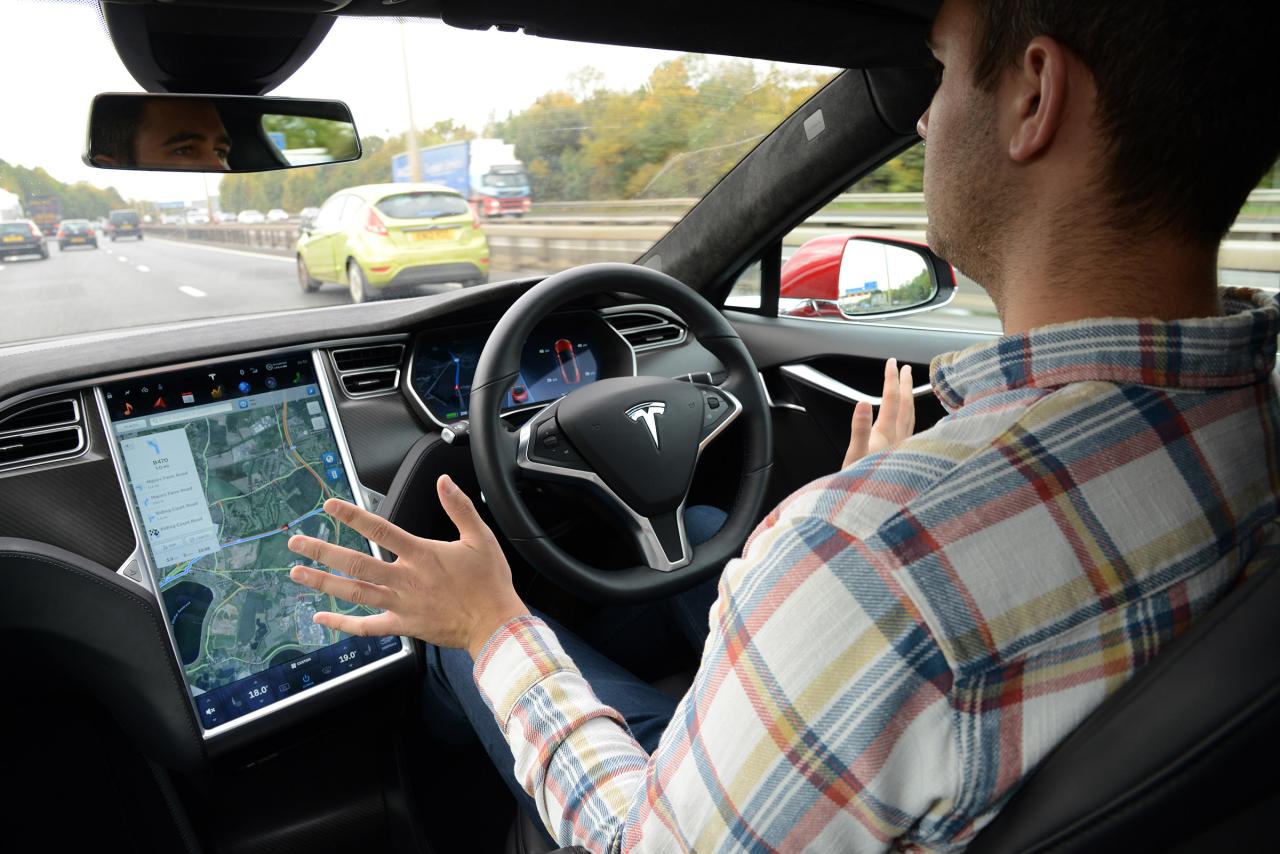
While the promise of enhanced safety is a primary driver for AV development, ethical dilemmas and regulatory challenges are significant and require careful consideration:
Safety and Accident Liability:
A. Statistical Proof: AV developers must demonstrate that their vehicles are statistically safer than human-driven cars, a high bar to meet given the complexity and unpredictability of real-world driving. This requires extensive testing and robust data collection.
B. “Edge Cases”: Handling rare, unpredictable, or unprecedented scenarios (e.g., an object falling from a bridge, an animal darting onto the road, complex construction zones) remains a significant challenge for AV systems. These “edge cases” are difficult to anticipate and program for.
C. Accident Investigation: Determining fault in AV accidents requires new methods of investigation, analyzing vast amounts of sensor data, system logs, and AI decision-making processes. Transparency in data sharing is crucial for public trust.
D. Cybersecurity: Protecting AVs from hacking, malicious attacks, and data breaches is paramount to ensure the safety of occupants and other road users. A compromised AV could have catastrophic consequences.
Ethical Dilemmas (“Trolley Problem”):
A. Unavoidable Accidents: In hypothetical scenarios where an accident is unavoidable, how should an AV be programmed to prioritize outcomes? (e.g., swerve to save occupants but hit pedestrians, or vice versa; sacrifice property to save lives). While often simplified in public discourse, these philosophical questions highlight the need for transparent ethical guidelines and societal consensus on AV programming.
B. Risk Allocation: How much risk is acceptable for an AV compared to a human driver? The societal tolerance for AV failures (even if rare) may be lower than for human errors, leading to calls for “perfection” that might be unattainable.
Regulatory Fragmentation:
A. Varying Laws: Different states, provinces, and countries have varying, and sometimes conflicting, regulations (or lack thereof) regarding AV testing and deployment. This creates a patchwork of rules that complicates development, widespread adoption, and scalability for companies operating globally.
B. Standardization: The need for global standards for testing protocols, data sharing formats, AV system certification, and performance metrics is critical for consistent and safe deployment worldwide.
C. Public Perception and Trust: Overcoming public skepticism, fear of new technology, and building widespread trust in autonomous technology is crucial. Any major accident involving an AV, especially with media sensationalism, can significantly set back public acceptance and regulatory progress.
E. Infrastructure Requirements for Mass AV Adoption
The widespread deployment of self-driving vehicles will necessitate significant upgrades and adaptations to existing infrastructure:
A. Enhanced Digital Mapping: Continuous updates and extreme precision for HD maps are essential for AV navigation. This requires robust data collection, validation, and real-time distribution networks, often involving collaboration between AV companies and mapping providers.
B. V2X Communication Network: The establishment of dedicated communication channels and roadside units for V2X (Vehicle-to-Everything) communication will be vital for smart traffic management, enhanced safety, and optimizing traffic flow. This might involve deploying 5G networks or dedicated short-range communication (DSRC) technologies.
C. Improved Road Markings and Signage: Clear, consistent, highly visible, and well-maintained lane markings, road signs, and traffic signals are crucial for AVs’ perception systems, especially for camera-based systems. Deteriorated infrastructure can pose significant challenges.
D. Smart Traffic Management Systems: Integration of AV data with intelligent traffic control systems to optimize traffic flow, reduce congestion, manage dynamic speed limits, and prioritize emergency vehicles, creating more efficient road networks.
E. Charging and Refueling Infrastructure: For electric AVs, ubiquitous and efficient charging infrastructure will be paramount, including fast-charging hubs, wirelessly charged roads, and potentially autonomous charging robots. For hydrogen fuel cell AVs, a network of hydrogen fueling stations will be needed.
F. Dedicated AV Lanes/Corridors: In some highly congested urban areas, dedicated lanes or designated zones for autonomous vehicles might be implemented to optimize their operation, ensure smooth traffic flow, and enhance safety by separating them from human-driven traffic initially.
G. Cybersecurity Infrastructure: Robust national and international frameworks for protecting AV communication networks, onboard systems, and data from cyberattacks, ensuring the integrity and reliability of autonomous operations.
F. The Human Element
Beyond the technical and economic aspects, self-driving technology will profoundly alter human behavior and societal norms:
A. Redefining “Driving”: For many, driving is a skill, a source of independence, a passion, or simply a necessity. Autonomous vehicles will fundamentally redefine this relationship, shifting the focus from active control to passive ridership for a significant portion of the population. This could lead to a change in identity for some.
B. Commute Transformation: Commute time can be repurposed for work, leisure, education, or rest, potentially reducing stress, increasing productivity, and improving overall well-being for millions of commuters. This could turn traditionally “dead” travel time into productive or relaxing time.
C. Impact on Public Transport: AVs could either supplement existing public transportation (e.g., providing first-mile/last-mile solutions) or directly compete with it, influencing urban planning, reducing individual car ownership, and potentially reshaping public transport networks.
D. Accessibility for All: Individuals unable to drive due to age, disability, or lack of a license will gain unprecedented freedom of movement and independence, significantly improving quality of life for millions who are currently mobility-restricted.
E. Reduced Traffic Accidents: A future with significantly fewer road fatalities and injuries due to human error could dramatically reduce the burden on healthcare systems, emergency services, and alleviate personal tragedies associated with road accidents.
F. Urban Design and Parking: Reduced private car ownership, the rise of shared autonomous fleets, and the potential for autonomous vehicles to “self-park” in centralized hubs or “loop” to pick up new passengers could free up vast amounts of urban land currently dedicated to parking lots and garages.
G. Behavioral Adaptation: People will need to learn to trust AVs, and pedestrians, cyclists, and other road users will need to adapt their interactions with driverless vehicles. This includes understanding AV signaling, predictable movements, and the absence of direct eye contact with a human driver.
Conclusion
Self-driving technology represents one of the most ambitious and transformative technological endeavors of our time. From the intricate network of sensors and the boundless power of AI to the complex ethical and regulatory considerations, every aspect of AV development is pushing the boundaries of innovation. While the road to full Level 5 autonomy is still long, with significant technical, legal, and social hurdles to overcome, the progress achieved in recent years is nothing short of remarkable.
The widespread adoption of autonomous vehicles promises a future where roads are safer, transportation is more efficient, and mobility is more accessible than ever before. It will redefine industries, reshape urban landscapes, and profoundly alter our daily routines. As research and development accelerate, and pilot programs expand globally, the vision of a world where vehicles navigate themselves, enhancing human lives and fostering a new era of mobility, moves steadily closer to reality. The journey toward a truly autonomous future is an exciting one, driven by intelligence, innovation, and an unwavering commitment to progress.

